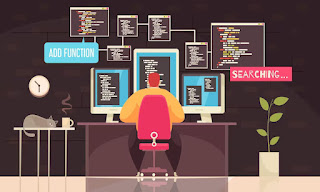Explore How AI-Powered Video Analytics Lowers Risks in High-Hazard Manufacturing Environments
In today’s dynamic manufacturing landscape, the focus on safety, efficiency, and quality is stronger than ever. With rapid technological advancements, manufacturers are turning to AI-powered video analytics to address these priorities. By turning video footage into actionable insights, AI video analytics plays a crucial role in mitigating risks, enhancing workplace safety, and driving operational efficiency.
AI-powered video analytics has emerged as a game-changer, especially in high-hazard environments like manufacturing plants. These intelligent systems offer real-time monitoring, predictive alerts, and automation, all of which contribute to safer, smarter workplaces. From detecting fires early to ensuring compliance with safety protocols, AI is revolutionizing how manufacturers manage and respond to potential hazards.
Key Applications of AI-Powered Video Analytics in Manufacturing
1. Real-Time Threat Detection
One of the most important features of AI video analytics software is its ability to detect potential threats in real time. Whether it's unauthorized access, aggressive behavior, or loitering in restricted zones, these systems are designed to flag abnormalities as they occur. By continuously analyzing video feeds, AI helps security teams intervene before incidents escalate, ensuring swift, proactive responses.
Predictive analytics is also transforming risk management. By analyzing historical video data, AI can identify patterns and predict future risks. This capability enables facilities to prevent accidents rather than merely react to them, offering a significant leap in safety assurance.
2. Fire and Smoke Detection
Traditional smoke detectors have their limitations, often responding too late. AI-powered video analytics overcomes this by detecting signs of fire—such as heat signatures or smoke—right at the source. These systems analyze visual data in real-time and alert emergency teams the moment abnormal heat levels are detected.
According to the National Fire Protection Association, manufacturing facilities using AI-powered detection systems have experienced up to 30% fewer fire incidents. Early detection not only minimizes potential damage but also significantly cuts operational costs associated with fire-related downtime.
3. Enhanced Workplace Safety
Workplace safety is a persistent concern in sectors like manufacturing, logistics, and construction. Computer vision in manufacturing plays a critical role by leveraging AI video analytics to provide a robust solution for monitoring and enforcing safety regulations. For instance, it can instantly detect hazards such as blocked emergency exits, wet floors, or malfunctioning machinery.
When a safety violation is observed, the system immediately notifies supervisors, prompting quick corrective actions. This not only reduces the likelihood of accidents but also ensures continuous compliance with occupational safety standards.
4. Ceiling Clearance Monitoring
In many manufacturing facilities, ceiling clearance plays a vital role in fire suppression. Obstructions near sprinklers can impair their effectiveness. With computer vision, AI systems monitor ceiling spaces and send alerts when objects interfere with clearance zones.
This ensures that fire suppression systems operate efficiently, preventing small fire threats from turning into full-blown emergencies. Continuous monitoring ensures facilities meet fire code regulations while improving overall risk management.
5. Emergency Response Optimization
In high-stakes environments like manufacturing plants, emergencies require immediate and precise responses. AI-powered video analytics systems assist by pinpointing the exact location of an incident and providing real-time data to emergency personnel.
During events like fires or chemical leaks, the system can identify the affected zone and guide responders using live video and motion analysis. This enhances response accuracy and minimizes potential casualties or property damage.
6. Facial and Object Recognition
Modern AI systems are also equipped with facial and object recognition capabilities. These tools are particularly effective in access control, ensuring that only authorized personnel enter restricted zones. If an unauthorized individual is detected, an alert is triggered, notifying the appropriate security teams.
Beyond security, these systems support emergency protocols by identifying individuals in need of assistance and guiding evacuations using real-time crowd analysis. This improves the efficiency and safety of evacuation processes during crises.
7. PPE Detection
Proper use of Personal Protective Equipment (PPE) is essential in high-risk work environments. AI-powered video analytics can automatically detect whether workers are wearing the correct gear—helmets, gloves, safety goggles, and hearing protection—and flag any instances of non-compliance.
Real-time alerts to supervisors ensure that corrective measures can be taken immediately. Moreover, predictive analytics can identify recurring trends in non-compliance, helping managers proactively address safety training or procedural gaps.
8. Behavioral Safety Monitoring
AI video analytics not only watches for physical risks but also tracks behavioral anomalies. By analyzing employee movements and interactions, it can detect signs of fatigue, aggression, or unsafe behavior patterns.
This proactive behavioral monitoring allows for early intervention, ensuring that potential threats to safety are addressed before becoming systemic. It’s particularly useful in environments with heavy machinery or hazardous materials, where even small behavioral lapses can have significant consequences.
Driving Cost-Efficient Safety Improvements
Automating safety monitoring through AI-powered video analytics not only enhances security but also reduces costs. By minimizing the need for constant human supervision, facilities can allocate resources to more critical areas of operation.
Furthermore, by identifying and addressing risks early, companies can prevent costly incidents, legal issues, and downtime. The integration of predictive analytics means better planning, fewer disruptions, and a significant boost to overall productivity.
Final Thoughts
AI-powered video analytics is reshaping safety management in high-risk manufacturing environments. Its ability to detect, analyze, and respond to potential hazards in real time makes it an invaluable tool for modern manufacturers. From PPE compliance and fire detection to emergency response and behavioral monitoring, AI ensures a safer, more efficient workplace.
As technology evolves, these systems will become even more accurate, adaptive, and essential. At Nextbrain, we specialize in creating innovative AI video analytics solutions tailored to the unique needs of manufacturing industries. Our expert team combines deep technical knowledge with practical experience to deliver reliable, future-ready safety solutions.
Are you ready to leverage AI for a safer workplace?
Get in touch with Nextbrain’s experts and explore how our AI video analytics software can revolutionize your manufacturing safety protocols.



%20(1).jpg)
Comments
Post a Comment